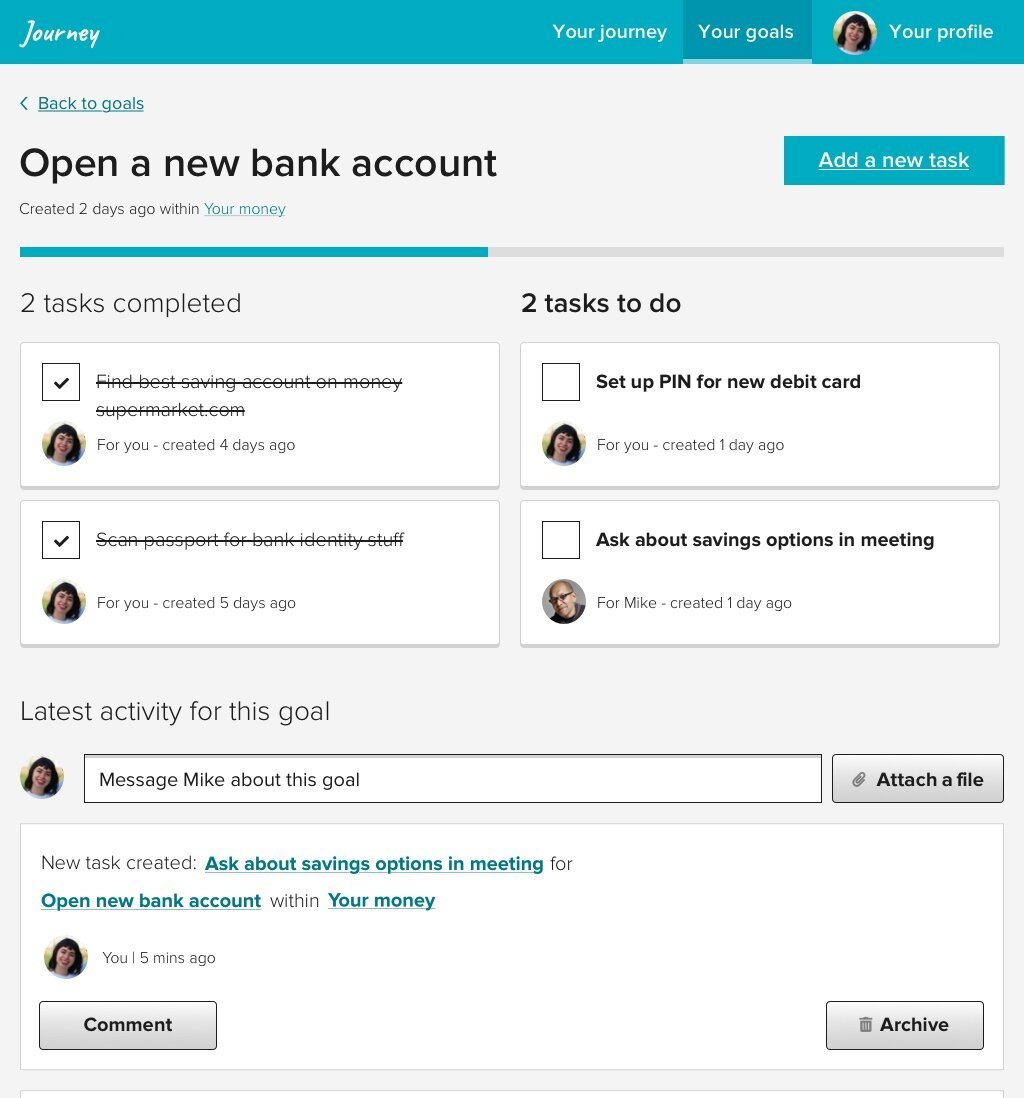Helping young people plan for leaving care
User Research | Digital Strategy | Service Design | PrototypingClient: Barnardo’sDeliverable: Service maps, digital prototypes Aims and Objectives
With support workers time stretched over a large caseload some young people leaving care are only getting face to face support from their workers once every six months to help them plan for the future. The challenge was how we could use technology to augment the existing planning process care leavers undertake, to aid communication between workers and care leavers and also help young people plan for the future as they transition into adulthood.
Outcomes
The next version of the app is currently in development but early feedback has been very positive and has shown that by pivoting it has helped:
Focusing the communication on goals and themes means that the app only gets used for future planning and is enough of a differentiator to encourage non planning conversations to happen on other platforms
The app allowed workers to have an oversight into all the care leavers progress which meant that their time could be focused on those who need the help most
Aligning the themes to pre existing care leaving planning processes helps workers with their care leavers paperwork and tracking
By making the themes customisable opens up the app for use with other services that work with young people
Approach
A large discovery piece of work had already been completed when I started on the project. The findings from the research showed that young people leaving care felt disengaged with the process, had little ownership of the plans and lacked support outside of the meetings. Also care leavers felt that the meetings they did have were less on planning for the future and focused more on what had happened since the last meeting.
On the back of the research some preliminary work had already been done on a web app which could be used for testing with young people. The initial version of the app itself was a basic communications platform whereby a worker could have private, one to one conversations with the care leavers in their caseload.
To really understand the effectiveness of the app it was important to trial it with care leavers and their workers over an extended period of time. The trials were established at various locations across the country and during these testing phases I gathered quantitative and qualitative research data in the form of usage analytics and also interviews before and at key phases during the trial. An analytics dashboard was developed so I could see engagement levels for each user and use that insight to target the interviews based on engagement (those with high and low usage were of particular interest).
The first version of the app gave us lots of insight into what was and was not working with the app. One of the main learnings was that as a simple communications tool the app worked but there was confusion over the platforms that were currently in use such as SMS, WhatsApp and Facebook Messenger and how the app differed from them. There were also concerns from workers about what would happen if there was a crisis call on the app and how it could be dealt with outside of office hours.
Taking on board these learnings I decided to pivot the direction of the app and keep the communications aspect (which was working well) but focus the app more on planning for the future. This would be done through setting goals and tasks for the young people set around key themes.
The concept was simple. The young people would work with the workers to identify goals (eg. opening a bank account) and within that there would be a number of tasks that would need to completed to achieve the goal (eg. presenting birth certificates). These goals would also be aligned with themes (eg. Money). All in app chat would be focused around themes and goals which would give the communications aspect a real focus.

